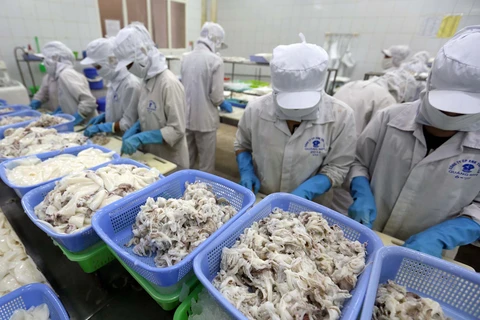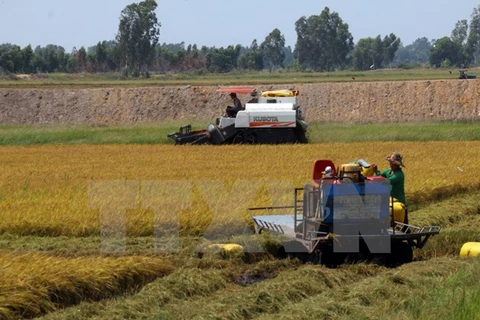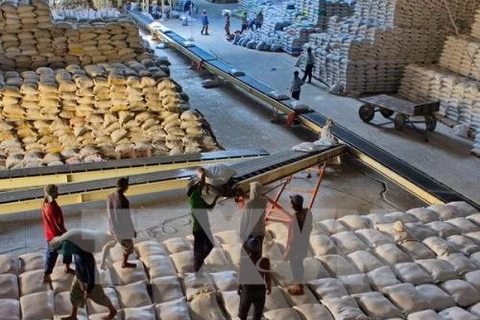 Farmers harvest the 2016-2017 winter-spring rice crop in Vi Dong commune of Vi Thuy district, the Mekong Delta province of Hau Giang (Photo: VNA)
Farmers harvest the 2016-2017 winter-spring rice crop in Vi Dong commune of Vi Thuy district, the Mekong Delta province of Hau Giang (Photo: VNA) HCM City (VNA) – Exports of glutinous rice to China, Vietnam’s biggest rice importer, are stagnating, despite overseas shipments of the commodity soaring 34 percent in the first half of 2017.
Statistics from the Vietnam Food Association show that 2.65 million tonnes of rice were shipped abroad with free-on-board value of 1.65 billion USD in the first six months of 2017, an increase 0.25 percent in volume and 1.85 percent in value from the same period last year.
More than 1.16 million tonnes or 43.8 percent of the volume was shipped to China between January and June.
Meanwhile, more than 660,000 tonnes of the total exported rice was glutinous rice, surging 34 percent from a year earlier.
Overseas shipments of glutinous rice have sold well for the last three years as China began to purchase more of this product. Glutinous rice has made up 25 percent of exported rice volume, compared to 16.65 percent and 6.65 percent in the respective first halves of 2016 and 2015.
Most of Vietnam’s glutinous rice was destined for China, with a little for Indonesia.
The demand for glutinous rice in China has been relatively high in recent years, boosting both domestic and export prices. Businesses even exported glutinous rice at 490-500 USD per tonne at the end of this year’s winter-spring crop.
However, glutinous rice exports to China have slowed down over the last week, causing a drop in export prices, from 460-470 USD per tonne a week ago to 420-430 USD per tonne at present. Domestic prices also fell from 10,800-11,200 VND per kg to 10,400 VND per kg, said Dang Thi Lien – Director of the Long An Foodstuff Co. Ltd.
[Infographics: Vietnam’s rice export markets development strategy]
Many companies blamed the slowdown on changes in China’s glutinous rice import policy, forcing Chinese importers to offer lower bids to Vietnamese sellers to make up for higher import expenses.
Vietnamese firms will struggle to make a profit if they sell glutinous rice at 420-430 USD per tonne to China while purchasing it at 9,000-10,000 VND per kg from local farmers, explaining why the exports have slowed down.
Some enterprises said although China is a good market where Vietnam’s glutinous rice has few rivals, once supply surpasses demand, Vietnam’s dependence on the market poses great risks.
Experts said the agriculture ministry’s Department of Crop Production and localities should control the structure of planted rice varieties and avoid expanding the glutinous rice area.
Rice exporters also need to expand markets, especially in the Middle East and Southeast Asia, to avoid excessive dependence on China.-VNA
VNA
























